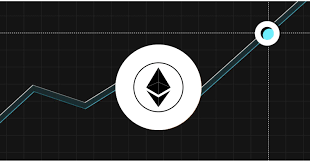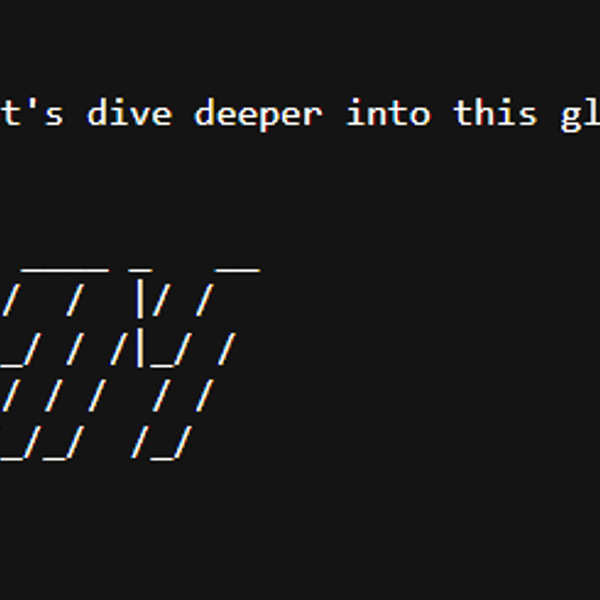Bitget:全球日交易量排名前 4!
BTC 市占率59.89%
目前 ETH 燃料費:0.1-1 gwei
BTC/USDT$101369.02 (-2.54%)恐懼與貪婪指數27(恐懼)
山寨季指數:0(比特幣季)
比特幣現貨 ETF 總淨流量:-$137M(1 天);-$1.84B(7 天)。Bitget 新用戶立享 6,200 USDT 歡迎禮包!立即領取
到 Bitget App 隨時隨地輕鬆交易!立即下載
Bitget:全球日交易量排名前 4!
BTC 市占率59.89%
目前 ETH 燃料費:0.1-1 gwei
BTC/USDT$101369.02 (-2.54%)恐懼與貪婪指數27(恐懼)
山寨季指數:0(比特幣季)
比特幣現貨 ETF 總淨流量:-$137M(1 天);-$1.84B(7 天)。Bitget 新用戶立享 6,200 USDT 歡迎禮包!立即領取
到 Bitget App 隨時隨地輕鬆交易!立即下載
Bitget:全球日交易量排名前 4!
BTC 市占率59.89%
目前 ETH 燃料費:0.1-1 gwei
BTC/USDT$101369.02 (-2.54%)恐懼與貪婪指數27(恐懼)
山寨季指數:0(比特幣季)
比特幣現貨 ETF 總淨流量:-$137M(1 天);-$1.84B(7 天)。Bitget 新用戶立享 6,200 USDT 歡迎禮包!立即領取
到 Bitget App 隨時隨地輕鬆交易!立即下載


RIZZMAS 2 (RIZZMAS) 價格預測
未上架
RIZZMAS 2 在 2025、2026、2030 年乃至未來可能價值多少?RIZZMAS 2 在明天、本週或本月的預測價格是多少?如果持有 RIZZMAS 2 到 2050 年,潛在投資回報率是多少?
本頁面提供 RIZZMAS 2 的短期和長期價格預測工具,幫助您評估 RIZZMAS 2 未來的價格表現。您還可以自行設定預測值,以估算 RIZZMAS 2 的未來價值。
需要注意的是,由於加密貨幣市場本身具有波動性大、複雜度高的特性,儘管價格預測提供了潛在價格區間和走勢場景的參考,但仍應保持審慎態度。
本頁面提供 RIZZMAS 2 的短期和長期價格預測工具,幫助您評估 RIZZMAS 2 未來的價格表現。您還可以自行設定預測值,以估算 RIZZMAS 2 的未來價值。
需要注意的是,由於加密貨幣市場本身具有波動性大、複雜度高的特性,儘管價格預測提供了潛在價格區間和走勢場景的參考,但仍應保持審慎態度。
2025 年及未來 RIZZMAS 2 價格預測走勢圖
根據預測的每日增長率 +0.014%,預測 RIZZMAS 2 未來 10 天的價格走勢。
今日价格预测(Nov 6, 2025)
$0.001235
明日價格預測(Nov 7, 2025)
$0.001236
5 天後價格預測(Nov 11, 2025)
$0.001236
本月價格預測(Nov 2025)
$0.001237
下個月價格預測(Dec 2025)
$0.001242
5 個月後價格預測(Apr 2026)
$0.001263
2025 年價格
$0.001266
2026 年價格
$0.001329
2030 年價格
$0.001615
根據短期 RIZZMAS 2 價格預測,預計 RIZZMAS 2 價格將在 Nov 6, 2025 達到 $0.001235,Nov 7, 2025 達到 $0.001236,以及 Nov 11, 2025 達到 $0.001236。根據每月 RIZZMAS 2 價格預測,預計 RIZZMAS 2 價格將在 Nov 2025 達到 $0.001237,Dec 2025 達到 $0.001242,Apr 2026 達到 $0.001263。根據每年長期 RIZZMAS 2 價格預測,預計 RIZZMAS 2 價格將在 2025 年達到 $0.001266,2026 年達到 $0.001329,且 2030 年達到 $0.001615。
今日 RIZZMAS 2 價格預測
目前 RIZZMAS 2(RIZZMAS)價格為 $0.0003129,24 小時價格漲跌幅為 0.00%。預計 RIZZMAS 2(RIZZMAS)今日價格將達到 $0.001235。了解更多 今日 RIZZMAS 2 價格。
RIZZMAS 2 Nov 2025 價格預測
預計 Nov 2025,RIZZMAS 2(RIZZMAS)價格漲跌幅為 Infinity%,且預計 RIZZMAS 2(RIZZMAS)價格將於 Nov 2025 底達到 $0.001237。
RIZZMAS 2 2025 價格預測
預計 2025,RIZZMAS 2(RIZZMAS)價格漲跌幅為 Infinity%,且預計 RIZZMAS 2(RIZZMAS)價格將於 2025 年底達到 $0.001266。
長期 RIZZMAS 2 價格預測:2026、2030、2035、2040、2050
以下為基於固定增長率的 RIZZMAS 2 價格預測模型。該模型不考慮市場波動、外部經濟因素或突發事件,僅專注於 RIZZMAS 2 的平均價格趨勢,幫助投資者分析並快速估算 RIZZMAS 2 投資的潛在收益。
請輸入您預測的 RIZZMAS 2 年增長率,即可查看 RIZZMAS 2 未來價值變化情況。
請輸入您預測的 RIZZMAS 2 年增長率,即可查看 RIZZMAS 2 未來價值變化情況。
每年 RIZZMAS 2 價格預測(基於 5% 的預測年增長率)
%
預測年增長率:請輸入一個介於 -100% 到 +1,000% 之間的百分比。
| 年份 | 預測價格 | 總收益率 |
|---|---|---|
2026 | $0.001329 | +5.00% |
2027 | $0.001395 | +10.25% |
2028 | $0.001465 | +15.76% |
2029 | $0.001538 | +21.55% |
2030 | $0.001615 | +27.63% |
2035 | $0.002062 | +62.89% |
2040 | $0.002631 | +107.89% |
2050 | $0.004286 | +238.64% |
基於年增長率為 5% 的情況下,預計 RIZZMAS 2(RIZZMAS)價格將在 2026 達到 $0.001329,2030 年達到 $0.001615,2040 年達到 $0.002631,2050 年達到 $0.004286。
RIZZMAS 2 2026 價格預測
在 2026,基於預測年增長率為 5% 的情況下,RIZZMAS 2(RIZZMAS)價格預計將達到 $0.001329。基於該預測,投資並持有 RIZZMAS 2 直至 2026 的累計投資回報率將達到 5.00%。
RIZZMAS 2 2030 價格預測
在 2030,基於預測年增長率為 5% 的情況下,RIZZMAS 2(RIZZMAS)價格預計將達到 $0.001615。基於該預測,投資並持有 RIZZMAS 2 直至 2030 的累計投資回報率將達到 27.63%。
RIZZMAS 2 2035 價格預測
在 2035,基於預測年增長率為 5% 的情況下,RIZZMAS 2(RIZZMAS)價格預計將達到 $0.002062。基於該預測,投資並持有 RIZZMAS 2 直至 2035 的累計投資回報率將達到 62.89%。
RIZZMAS 2 2040 價格預測
在 2040,基於預測年增長率為 5% 的情況下,RIZZMAS 2(RIZZMAS)價格預計將達到 $0.002631。基於該預測,投資並持有 RIZZMAS 2 直至 2040 的累計投資回報率將達到 107.89%。
RIZZMAS 2 2050 價格預測
在 2050,基於預測年增長率為 5% 的情況下,RIZZMAS 2(RIZZMAS)價格預計將達到 $0.004286。基於該預測,投資並持有 RIZZMAS 2 直至 2050 的累計投資回報率將達到 238.64%。
您能從 RIZZMAS 2 中獲得多少收益?
如果您今年投資 $100 於 RIZZMAS 2,並持有至 2026 年,基於價格預測,您可能獲得 $5 的潛在收益,預估回報率為 5.00%。(該估算未包含手續費)。
免責聲明:本內容不構成投資建議。所提供的資訊僅用於一般參考目的。本頁面所提供的任何資訊、資料、服務或其他內容,均不構成任何形式的招攬、推薦、背書,亦不構成金融、投資或其他方面的建議。在做出任何投資決策前,請務必尋求來自法律、金融及稅務等方面的獨立專業意見。
短期 RIZZMAS 2 價格預測表
每日 RIZZMAS 2 價格預測(基於 0.014% 的每日預估漲幅)
RIZZMAS 2 在明天、5 天後、10 天後及更長時間的預測價格是多少?%
預測每日漲幅:請輸入一個介於 -100% 到 +1,000% 之間的百分比。
| 日期 | 預測價格 | 總收益率 |
|---|---|---|
Nov 7, 2025 (明天) | $0.001236 | +0.01% |
Nov 8, 2025 | $0.001236 | +0.03% |
Nov 9, 2025 | $0.001236 | +0.04% |
Nov 10, 2025 | $0.001236 | +0.06% |
Nov 11, 2025 (5 天後) | $0.001236 | +0.07% |
Nov 12, 2025 | $0.001236 | +0.08% |
Nov 13, 2025 | $0.001237 | +0.10% |
Nov 14, 2025 | $0.001237 | +0.11% |
Nov 15, 2025 | $0.001237 | +0.13% |
Nov 16, 2025 (10 天後) | $0.001237 | +0.14% |
基於 0.014% 的每日漲幅,預計 RIZZMAS 2(RIZZMAS)價格將在 Nov 7, 2025 達到 $0.001236,Nov 11, 2025 達到 $0.001236,Nov 16, 2025 達到 $0.001237。
RIZZMAS 2 Nov 7, 2025 價格預測
根據 RIZZMAS 2 的價格預測,其每日漲幅為 0.014%,預計在 Nov 7, 2025(明天),1 枚 RIZZMAS 2 的價格將達到 $0.001236。若投資並持有 RIZZMAS 2 至 Nov 7, 2025 為止,預期收益率為 0.01%。
RIZZMAS 2 Nov 11, 2025 價格預測
根據 RIZZMAS 2 的價格預測,其每日漲幅為 0.014%,預計在 Nov 11, 2025(5 天後),1 枚 RIZZMAS 2 的價格將達到 $0.001236。若投資並持有 RIZZMAS 2 至 Nov 11, 2025 為止,預期收益率為 0.07%。
RIZZMAS 2 Nov 16, 2025 價格預測
根據 RIZZMAS 2 的價格預測,其每日漲幅為 0.014%,預計在 Nov 16, 2025(10 天後),1 枚 RIZZMAS 2 的價格將達到 $0.001237。若投資並持有 RIZZMAS 2 至 Nov 16, 2025 為止,預期收益率為 0.14%。
每月 RIZZMAS 2 價格預測(基於 0.42% 的每月預估漲幅)
RIZZMAS 2 在下個月、5 個月後、10 個月後及更長期的預測價格是多少?%
預測每月漲幅:請輸入一個介於 -100% 到 +1,000% 之間的百分比。
| 日期 | 預測價格 | 總收益率 |
|---|---|---|
Dec 2025 (次月) | $0.001242 | +0.42% |
Jan 2026 | $0.001248 | +0.84% |
Feb 2026 | $0.001253 | +1.27% |
Mar 2026 | $0.001258 | +1.69% |
Apr 2026 (5 個月後) | $0.001263 | +2.12% |
May 2026 | $0.001269 | +2.55% |
Jun 2026 | $0.001274 | +2.98% |
Jul 2026 | $0.001279 | +3.41% |
Aug 2026 | $0.001285 | +3.84% |
Sep 2026 (10 個月後) | $0.001290 | +4.28% |
根據 0.42% 的每月漲幅,預計 RIZZMAS 2(RIZZMAS)價格將在 Dec 2025 達到 $0.001242,Apr 2026 達到 $0.001263,Sep 2026 達到 $0.001290。
RIZZMAS 2 Dec 2025 價格預測
根據 0.42% 的每月漲幅,RIZZMAS 2(RIZZMAS)的預測價格在 Dec 2025(次月)為 $0.001242。若投資並持有 RIZZMAS 2 至 Dec 2025 底,預期收益率為 0.42%。
RIZZMAS 2 Apr 2026 價格預測
根據 0.42% 的每月漲幅,RIZZMAS 2(RIZZMAS)的預測價格在 Apr 2026(5 個月後)為 $0.001263。若投資並持有 RIZZMAS 2 至 Apr 2026 底,預期收益率為 2.12%。
RIZZMAS 2 Sep 2026 價格預測
根據 0.42% 的每月漲幅,RIZZMAS 2(RIZZMAS)的預測價格在 Sep 2026(10 個月後)為 $0.001290。若投資並持有 RIZZMAS 2 至 Sep 2026 底,預期收益率為 4.28%。
熱門加密貨幣價格預測文章

Lemonade Stock Price Today: Why LMND Is Up Big After Q3 2025 Earnings
Lemonade, Inc. (NYSE: LMND), the AI-powered insurtech company disrupting the traditional insurance market, saw its stock price skyrocket following the release of its third-quarter 2025 earnings. The company, known for its fully digital platform offering renters, homeowners, pet, life, and car insurance, delivered results that significantly exceeded market expectations — igniting investor enthusiasm. LMND shares surged over 30% in a single day, marking one of the most substantial rallies in its recent trading history.
Q3 2025 Earnings Overview
Lemonade’s third-quarter 2025 results marked a pivotal moment in its growth trajectory. The company reported $194.5 million in revenue, representing a 42% year-over-year increase, and surpassing analyst expectations of approximately $185 million. This robust top-line growth was fueled by continued expansion across all insurance lines and improved pricing strategies supported by the company’s AI underwriting.
The company’s in-force premium (IFP) — a key growth metric — reached $1.16 billion, up 30% from the previous year. Notably, this marked the eighth consecutive quarter of accelerating IFP growth. Customer count grew to 2.87 million, a 24% YoY rise, further reinforcing Lemonade’s traction in a traditionally rigid industry.
Profitability metrics also showed improvement. The loss ratio declined to 62%, down from 73% earlier this year — the lowest in the company’s history. Meanwhile, net losses narrowed significantly to $37.5 million, or –$0.51 per share, beating the consensus estimate of –$0.70. Adjusted EBITDA came in at –$26 million, a 50% improvement year-over-year.
A major milestone: Lemonade posted positive cash flow, generating $18 million in adjusted free cash flow and $5 million in operating cash flow — the first time it’s done so in a quarterly report.
Co-founder and President Shai Wininger described the quarter as “the strongest in the company’s history,” citing both financial and operational execution. The company also raised its full-year revenue guidance, projecting $727–732 million for FY2025, up from prior guidance of $710–716 million.
Stock Price Reaction and Recent Movement
Lemonade, Inc. (NYSE: LMND) Price
Source: Yahoo Finance
Lemonade’s stellar Q3 2025 earnings triggered an immediate and dramatic rally in its stock price. Shares of LMND surged over 30% the day following the earnings release, climbing from around $58 to $76 and notching one of the stock’s most explosive single-day moves since its IPO. Trading volume spiked to over 7 million shares, nearly triple the daily average, signaling widespread investor interest.
The stock continued to show strong momentum into early November, briefly touching an intraday high of $81.90 before settling in the $73–$75 range. As of the latest close on November 6, 2025, Lemonade was trading at approximately $73.55, with a market capitalization hovering around $5.5 billion.
One factor contributing to the sharp price movement was likely a short squeeze. With roughly 25% of Lemonade’s public float previously sold short, the better-than-expected financials may have forced bearish traders to rapidly cover positions, further amplifying the upward momentum.
The rally reflects a clear market re-rating of Lemonade’s near-term potential. Investors are increasingly viewing the company not just as a high-growth disruptor, but as one that’s beginning to demonstrate operational discipline and a credible path toward profitability.
Wall Street Cautious, Retail Investors Bullish: The Sentiment Split on LMND
While investors have enthusiastically rewarded Lemonade’s Q3 performance, Wall Street analysts remain more cautious. The stock has significantly outperformed the broader market in 2025, rallying over 60% year-to-date compared to the S&P 500’s ~15% gain. Despite this momentum, LMND continues to carry a “Hold” to “Moderate Sell” consensus rating among analysts, reflecting lingering skepticism about the company’s path to sustainable profitability.
The average 12-month analyst price target currently sits near $44, implying a substantial downside from its current price in the mid-$70s. This valuation gap highlights concerns about the stock’s premium multiples — particularly its high price-to-sales ratio, which now exceeds 10x trailing revenue. For many analysts, Lemonade’s strong growth and improving loss ratios aren’t yet enough to justify its elevated valuation.
That said, sentiment is beginning to shift. Some firms have acknowledged the company’s operational improvements and raised their targets slightly in response to Q3’s beat. On the retail side, sentiment has been more bullish. Call option volume surged after earnings, and Lemonade remains a popular name on social platforms, with investors highlighting the company’s improving fundamentals and AI-driven operating model. The market’s tone is split: cautious optimism among professionals, and more enthusiastic buying pressure from retail investors and momentum-driven traders.
Price Prediction and Future Outlook
Lemonade’s Q3 results have reset expectations — both for its near-term financials and its long-term stock trajectory. Management has raised its full-year 2025 revenue guidance to between $727 million and $732 million, up from a prior range of $710–716 million. It also narrowed its projected adjusted EBITDA loss to $127–130 million, signaling stronger cost control and operating leverage.
Looking ahead to Q4 2025, Lemonade expects revenue between $217 million and $222 million, slightly above analysts’ consensus. The company continues to target positive adjusted EBITDA by Q4 2026, which would mark a major milestone in its evolution from a fast-growing disruptor to a sustainable business.
In terms of stock price direction, predictions are mixed. From a fundamental standpoint, if Lemonade maintains 30%+ annual in-force premium growth while improving its loss ratio and cash flow, it could justify its current valuation — or even exceed it. In that case, analysts may be forced to revise their $40–$50 price targets upward.
However, any misstep — slower growth, worsening loss trends, or macroeconomic headwinds — could lead to a sharp correction, especially given the stock’s elevated price-to-sales multiple and recent volatility. High short interest could also re-emerge if optimism fades.
Conclusion
Lemonade’s Q3 2025 results have positioned the company at a critical turning point. With accelerating revenue growth, improving loss ratios, and its first quarter of positive cash flow, the insurtech has begun to back its bold vision with tangible financial progress. Investors responded swiftly, pushing LMND shares up over 30% and signaling renewed confidence in the company’s long-term potential.
However, the road ahead still requires careful execution. While management has raised guidance and reiterated its goal of reaching adjusted EBITDA profitability by late 2026, analysts remain cautious, pointing to high valuation multiples and an unproven track record of sustained earnings. If Lemonade can deliver consistent performance over the next few quarters, it may continue to reward shareholders — but expectations are now higher than ever.
Disclaimer: The opinions expressed in this article are for informational purposes only. This article does not constitute an endorsement of any of the products and services discussed or investment, financial, or trading advice. Qualified professionals should be consulted prior to making financial decisions.
Bitget 學院2025-11-06 19:49

SLDP Stock Surges 600%, Then Slides After Q3: What’s Next for Solid Power?
In a year marked by extraordinary gains across select energy tech stocks, SLDP stock has quickly become one of the most closely watched tickers in the battery innovation space. Solid Power Inc. has seen its share price surge nearly 600% over the past twelve months. However, the explosive rally cooled off after the company’s third-quarter earnings report, which revealed revenue shortfalls and led to a swift drop in share price. Here’s what’s behind the stock’s roller-coaster year, and what investors are watching next for SLDP stock.
Q3 2025 Earnings Review and Stock Performance
Solid Power announced its financial results for the third quarter of 2025 on November 4. The company reported a net loss per share of $0.14—perfectly matching Wall Street’s forecast. However, revenue came in at $4.56 million, underperforming analyst estimates of $5 million, indicating a revenue miss of approximately 8.8%. Following the announcement, SLDP stock closed at $5.61, experiencing a short-term decline, but the subsequent trend has been firmly upward.
Key Stock Performance Metrics:
12-Month Price Jump: SLDP stock has skyrocketed 577.01% over the past year.
Year-to-date Increase: The shares surged 197.09% since January.
6-Month Momentum: Remarkably, SLDP gained 396.9% over just the past six months.
Recent 3-Months Growth: Shares advanced 43.97% in the last quarter alone.
Market Capitalization: The company’s market value has risen sharply, reaching $1.42 billion—a substantial change from earlier in the year.
Balance Sheet: Despite the quarterly revenue miss, Solid Power maintains a robust financial footing with a current ratio of 19.33 and revenue growth at 14.83%.
Investors continue to price in strong future growth for SLDP, trading it above calculated fair value according to third-party analysis. The consistent upward pressure on the share price throughout 2025, including new 52-week highs, underscores confidence in the company’s long-term business model and technology edge.
Institutional Holdings: Growing Confidence in SLDP
Institutional investors and hedge funds are increasingly establishing positions in Solid Power, demonstrating professional confidence in SLDP’s future prospects.
Recent institutional movements include:
Goldman Sachs Group Inc.: Expanded holdings by 12.7% in Q1, now owning 894,120 shares (worth ~$939,000 after purchasing an additional 100,939 shares).
Creative Planning and American Century Companies Inc.: Both initiated new stakes in Q2, valued at around $26,000 and $27,000, respectively.
Prudential Financial Inc.: Boosted its position by 69.7% in Q2, now holding 17,480 shares.
Brown Advisory Inc.: Also took a new position in Q2, valued at approximately $33,000.
As of now, 33.66% of SLDP shares are held by institutional investors and hedge funds, a significant vote of confidence in the firm's growth and resilience.
The Surging Demand for Solid-State Batteries
The development of solid-state battery (SSB) technology is transitioning quickly from laboratory research to scalable commercial production. According to industry analysis by TrendForce, close to 100 companies globally have now announced plans to manufacture solid-state batteries, collectively targeting a production capacity that exceeds 100 GWh. Some semi-solid battery variants have already reached mass production scales.
Currently, the adoption of all-solid-state batteries (ASSBs) remains mostly in the pilot production phase, producing several hundred megawatt-hours (MWh), where manufacturers are focused on validation and optimization. Broader use is underway in non-automotive settings, such as industrial robots, medical devices, and semiconductor manufacturing equipment. In the automotive sector, wider adoption is anticipated around 2027, as pilot applications give way to larger-scale integration.
Semi-solid-state batteries have already entered the market through specific electric vehicle models from companies including Dong Feng, NIO, IM, SERES, Voyah, and SAIC. Meanwhile, major automakers such as BMW, Mercedes-Benz, Stellantis, Chery, and Hyundai are actively testing vehicles that incorporate all-solid or semi-solid battery cells. In addition to automotive applications, energy storage is emerging as a primary use case, particularly in China, where semi-solid lithium iron phosphate (LFP) batteries are being introduced for stationary storage—expected to account for more than half of sector demand through 2026. Rapid uptake is also forecasted in segments such as consumer electronics, humanoid robots, and electric vertical takeoff and landing (eVTOL) aircraft, as a broader range of industries seek batteries with improved safety and energy density.
SLDP’s Business Expansion: Partnerships with BMW and Samsung SDI
Solid Power’s business strategy includes partnerships with leading auto and battery firms aimed at accelerating the commercialization of solid-state battery technology. The collaboration between BMW and Solid Power has been ongoing since 2016 under a joint development agreement, with BMW making a direct investment in Solid Power in May 2021. Progress in their partnership was marked by BMW’s receipt of initial prototype solid-state cells from Solid Power for qualification testing at the end of October 2023. By May 2025, these SSB cells had advanced to road testing in a BMW i7 prototype vehicle. Additionally, BMW established a prototype line for manufacturing solid-state cells at its Parsdorf facility in Germany, incorporating technology from Solid Power.
The alliance was further strengthened in late 2025 when Samsung SDI joined the project. Samsung SDI is set to integrate Solid Power’s sulfide-based solid electrolytes into its own cell production processes, with the aim of evaluating these cells according to criteria set in collaboration with BMW. Samsung SDI has publicly stated its ambition to become a leader in the commercialization of all-solid-state batteries by industrializing this technology, which is viewed as critical for next-generation EVs due to their enhanced safety profile and higher energy density.
With this three-way partnership, Solid Power is positioned at the intersection of automotive and advanced battery manufacturing, potentially playing an important role as these technologies approach market maturity and scale.
SLDP Stock Price Prediction and Analyst Ratings
Market analysts remain divided in their outlook for SLDP, reflecting both the potential and the challenges of disruptive battery tech investing:
Needham & Company LLC: Upgraded price target from $2.00 to $4.00 with a “Buy” rating following recent business progress.
Weiss Ratings: Maintained a “Sell (D-)” rating, citing risks and near-term uncertainty.
Consensus: The current consensus rating is “Hold,” with an average price target of $4.00 according to MarketBeat.
It's important to note that the stock is now trading significantly above the consensus price target, near $5.61 at last earnings and climbing further post-report. This premium reflects investor confidence in long-term prospects, surging industry demand, and the partnerships with BMW and Samsung SDI, but also introduces valuation risk if execution falters or commercialization is delayed.
Conclusion
Solid Power Inc. (SLDP) is at the epicenter of the fast-evolving solid-state battery sector, boasting a year of record-breaking stock appreciation and validation from major carmakers and institutional investors. While the company faces near-term revenue challenges and mixed analyst sentiment, the trajectory of the solid-state market, ongoing strategic partnerships, and a robust balance sheet position SLDP for long-term growth and potential leadership in next-generation battery technology. Investors should weigh the promise of solid-state innovation against the inherent risks of emerging tech when evaluating SLDP stock.
Disclaimer: The opinions expressed in this article are for informational purposes only. This article does not constitute an endorsement of any of the products and services discussed or investment, financial, or trading advice. Qualified professionals should be consulted prior to making financial decisions.
Bitget 學院2025-11-06 12:40

What Is Folks Finance (FOLKS)? FOLKS Airdrop, Tokenomics, and What Might Happen to the Price Post-Launch
Decentralized finance (DeFi) has evolved from a niche innovation into a major pillar of the blockchain ecosystem. By removing intermediaries and allowing users to interact directly with smart contracts, DeFi has unlocked new ways to lend, borrow, stake, and trade digital assets. As the sector matures, investors are seeking more advanced platforms that combine usability, security, and cross-chain functionality.
One project answering that call is Folks Finance, a next-generation DeFi platform built on Algorand. Known for its non-custodial architecture and user-centric design, Folks Finance is redefining how crypto holders manage their capital through tools like liquid staking, algorithmic lending markets, and multi-chain support. In this article, we’ll explore what Folks Finance is, how it works, what role the FOLKS token plays, and what might be in store after its highly anticipated token launch.
What Is Folks Finance (FOLKS)?
Folks Finance is a non-custodial decentralized finance (DeFi) protocol that empowers users with a robust suite of tools for managing digital assets—spanning lending, borrowing, staking, swapping, and governance. Initially launched in 2022 as the leading DeFi platform on the Algorand blockchain, Folks Finance has since evolved into a dynamic, multichain DeFi hub, now live on Ethereum, Avalanche, Base, Arbitrum, BNB Chain, Polygon, Sei, and Algorand.
The protocol leverages a hub-and-spoke model and cutting-edge messaging layer technologies to abstract the complexities of cross-chain interactions. This allows users to seamlessly interact with assets and services across multiple blockchains, all within a unified and intuitive user interface. With a focus on user control, security, and efficiency, Folks Finance eliminates the risks of centralized intermediaries through smart contract automation, making advanced financial strategies more accessible to a global audience.
How Folks Finance (FOLKS) Works
At its core, Folks Finance offers decentralized lending and borrowing markets. Users can deposit supported tokens—such as ALGO, USDC, or ETH—to earn yield, or use their assets as collateral to take out overcollateralized loans. With the launch of V2, the platform introduced major upgrades, including a reimagined user interface, removal of front-end fAssets for a smoother lending experience, and expanded functionality for pro users and developers.
One of the standout features is the Folks Router, a decentralized exchange (DEX) aggregator that routes swaps across multiple DEXs to ensure the most favorable trade execution. It supports split routing and multi-path transactions for optimized pricing. V2 also introduces high-efficiency loans, allowing users to borrow with up to 90% loan-to-value (LTV) when using closely correlated assets such as gALGO/ALGO or USDC/USDT.
For power users, the platform enables advanced strategies such as:
● Collateral swaps: dynamically convert loan collateral from one asset to another.
● Multi-collateral and multi-borrow positions: use a combination of assets to secure loans and borrow multiple tokens in a single position.
● Flash loans: developers can tap into instant liquidity and repay within the same transaction group using the Folks SDK.
● Stable and variable rate loans: users can now lock in stable interest rates or choose variable terms based on their risk tolerance.
● Repayment using collateral: a streamlined feature that lets borrowers repay directly from their collateral, simplifying exit strategies.
Folks Finance also excels in governance integration through Algo Liquid Governance and Cross-chain Liquid Governance. Users can stake ALGO or supported assets to mint gALGO and xALGO, which represent staked positions that can simultaneously be used in DeFi strategies while participating in Algorand governance. These synthetic tokens have growing utility and composability across the Folks ecosystem.
Folks Finance (FOLKS) Tokenomics
FOLKS Token Allocation
The FOLKS token is the native utility and governance asset of the Folks Finance protocol. Designed to align with the platform’s multichain architecture, FOLKS is deployed using the Non-Transferable Token (NTT) standard and exists natively across several major blockchain networks, including Ethereum, Avalanche, Base, Arbitrum, BNB Chain, Polygon, Algorand, and Sei. This eliminates the need for wrapped or synthetic versions of the token, ensuring seamless functionality across ecosystems. With a fixed total supply of 50 million tokens, FOLKS plays a key role in enabling on-chain governance, rewarding protocol users, and powering the long-term sustainability of the ecosystem.
Beyond governance, the FOLKS token fuels various user incentives, liquidity initiatives, and strategic partnerships. Token holders can vote on proposals that shape the evolution of the protocol, such as parameter adjustments, feature upgrades, and ecosystem integrations. Airdrop campaigns, like Season 1, have been used to distribute FOLKS to active community members, while offering flexible claiming options to encourage long-term engagement. Whether used for governance, staking, or community rewards, FOLKS is central to the coordination and expansion of the broader Folks Finance platform.
Folks Finance (FOLKS) Airdrop: Everything You Should Know
To celebrate the launch of its native token, Folks Finance introduced Airdrop Season 1, a thoughtfully designed distribution campaign aimed at rewarding early supporters and encouraging long-term ecosystem engagement. Here's a full breakdown of how it works:
1. Who’s Eligible
Users qualified for the airdrop based on their prior interaction with the Folks Finance ecosystem and its partners. Eligible participants include:
● Users who accumulated Folks Points during leaderboard campaigns
● Holders of Founders Pass NFTs
● Participants in official partner campaigns with: OKX Wallet, Airaa, Gate Wallet, Zerion Wallet, Galxe, Haha Wallet, and Orbiter
2. How Airdrop Amounts Are Calculated
● Folks Points: Allocations are based on a user’s leaderboard ranking, using a logarithmic formula to create a fair distribution curve
● Founders Pass NFTs: Each NFT grants a base amount of FOLKS, with bonus tokens awarded based on NFT tier (Silver, Gold, Black)
● Partner Campaigns: Fixed allocations are distributed per campaign and fully claimable at launch
3. When the Snapshot Was Taken
The eligibility snapshot for Season 1 was taken on October 24, 2025, at approximately 11:00 AM UTC. Users needed to have met qualifying criteria by this time to be included in the airdrop.
4. How to Claim
There are two options available to eligible users:
● Instant Claim: Receive 20% of the airdrop immediately, with no additional tokens unlocked afterward.
● Linear Unlock: Receive 10% of the airdrop immediately, with the remaining 90% unlocking daily over 90 days starting from December 16, 2025.
● Important: Users must select a claiming method by December 16, 2025, at 14:00 UTC, and the final deadline to claim unlocked tokens is March 31, 2026; any unclaimed tokens after this date will be permanently lost.
5. When Is Folks Finance (FOLKS) Listing Date?
The FOLKS token officially listed on major exchanges on November 6, 2025. The listing was accompanied by the airdrop claim window opening, giving users immediate access to their tokens and the option to participate in early market activity.
Folks Finance (FOLKS) Token Price Prediction: What Could Happen After Launch?
Predicting the price of a newly launched token is inherently uncertain, but there are several factors that can help shape expectations. The FOLKS token entered the market with significant anticipation, supported by community incentives, airdrop campaigns, and widespread multichain availability. Early price action is often influenced by high demand, speculative trading, and short-term selling pressure from airdrop recipients. These elements can contribute to notable volatility in the first days or weeks of trading.
Over the longer term, the performance of FOLKS will likely reflect the underlying growth and adoption of the Folks Finance protocol itself. Key variables include user engagement, expansion across supported blockchains, integration of token utility in governance and platform rewards, and the effectiveness of ecosystem incentives. While early activity can be unpredictable, the token’s structured supply model and embedded use cases provide a foundation for sustainable value—assuming continued innovation and traction within the DeFi landscape.
Conclusion
Folks Finance has positioned itself as a forward-thinking DeFi platform that combines usability, flexibility, and technical depth. What began as a lending protocol on Algorand has grown into a multichain ecosystem offering tools for borrowing, staking, governance participation, and token swaps across several blockchains.
With the introduction of the FOLKS token, the protocol enters a new chapter centered on user ownership and cross-chain expansion. While its long-term impact will depend on adoption and utility, the groundwork is promising. Could Folks Finance become a cornerstone of the next generation of decentralized finance?
Disclaimer: The opinions expressed in this article are for informational purposes only. This article does not constitute an endorsement of any of the products and services discussed or investment, financial, or trading advice. Qualified professionals should be consulted prior to making financial decisions.
Bitget 學院2025-11-06 10:22

Bitcoin Price Prediction: Why It’s Down, Who’s Selling, and When the Recovery Could Start
By mid-2025, Bitcoin had shown remarkable resilience in the face of turbulence that might have crushed a more retail-driven market. Much of this strength could be traced to an unlikely alliance: corporate treasuries and spot Bitcoin ETFs—two institutional powerhouses quietly absorbing new supply and providing a reliable demand base. This partnership allowed Bitcoin to resist the effects of economic tightening and rising rates. Yet, as the year has progressed, that sturdy foundation has started to shift, with profound implications for traders and long-term holders alike.
Source: CoinMarketCap
Why Is the Bitcoin Price Down? What’s Different This Time?
A huge factor in the recent bitcoin price weakness is changing behavior among its biggest backers—corporates and major institutions. Until recently, companies like MicroStrategy (now “Strategy”) seemed to have limitless appetite, building a world-leading Bitcoin treasury of over 674,000 BTC. But in 2025, their buying has cooled off sharply. Just 4,300 BTC were added in the third quarter—by far the slowest pace in a year. This isn’t just a change of heart: the premium for owning shares of BTC-heavy companies has collapsed, going from a flood of leveraged buyers to a trickle. Where investors once paid as much as 208% above Bitcoin’s net asset value, now that premium is just 4%. This shift means less capital for treasury stockpiling, easing the pressure that kept the bitcoin price strong.
Other public companies have run into similar trouble, as seen with Japan’s Metaplanet, which recently saw its share price fall below even the value of its bitcoin holdings. Tactical measures like buybacks and refinancing abound. The recent merger of Strive and Semler Scientific also shows that the “Bitcoin treasury on the balance sheet” movement is entering a slower, more cautious phase, affecting the bitcoin price accordingly.
Are ETFs Still Protecting the Bitcoin Price—or Making It More Volatile?
Bitcoin ETFs exploded in popularity and, for most of 2025, reliably soaked up the supply, offering a powerful safety net for the bitcoin price. For instance, the beginning of October saw crypto ETFs absorb almost $6 billion in just two weeks. But by month’s end, large redemptions flipped the narrative and began pushing the bitcoin price lower. BlackRock’s IBIT, once a powerhouse, suffered the largest single-day outflow of $291 million since summer.
What’s changed? In short, financial conditions got rough, and rate expectations shifted. Institutional investors don’t have the same bullish certainty, leading to dramatic swings—sometimes inflow waves, sometimes outflow surges. ETFs are now a two-way street: they can support the bitcoin price, but they can also amplify corrections, depending on Wall Street’s mood.
What Do On-Chain Data and Whale Moves Tell Us About Bitcoin Price Trends?
On-chain signals are also sending a powerful message about the bitcoin price. Most notably, even long-term holders—typically the “diamond hands” of crypto—have started selling in meaningful volume. More than 327,000 BTC left long-term holders’ wallets in the past month. Historically, this kind of distribution marks periods of stress, as persistent selling can overpower the new demand and pressure the bitcoin price lower.
These on-chain outflows coincided with failed rally attempts in late October and November, a sign that markets lacked conviction. Glassnode data shows that while net flows have slowed, ETF holdings (totaling about $150 billion) still indicate faith in the long-term bitcoin price. Notably, during times of fear, certain whales are betting on a reversal. The famed "Hyperunit" whale who made $200 million on the last crash recently went long again, adding $55 million worth of BTC and ETH, hinting that seasoned players may see an opportunity in the current bitcoin price zone.
How Are Miners and Public Companies Affecting the Bitcoin Price?
The alignment of miner operations with the bitcoin price has rarely been this important. The average miner production cost has soared to around $114,000 per BTC, sometimes overtaking the actual bitcoin price—putting enormous pressure on their finances. This is forcing miners to sell even more aggressively, or branch out into other fields like AI infrastructure and cloud computing.
Corporate bitcoin treasuries are also under stress. Data from SosoValue in October show that, while non-mining public companies bought over 7,200 BTC, the overwhelming bulk of these purchases occurred in the first week. By late month, the buying engine had stalled. Of the largest 38 corporate BTC holders, 24 are now underwater, holding coins bought at higher levels than today’s bitcoin price. Some, like Sequans, have even begun selling back to the market to pay down debt.
Is the Bitcoin Price Still Following Its Famous Cycles, or Just Acting Like Another Risk Asset?
With both ETF and corporate support faltering, the bitcoin price now closely mirrors global risk appetite—rising with stock market rallies and falling during risk-off periods. Analysts note that Bitcoin’s once-sacred four-year halving cycle matters less in 2025, replaced by heightened sensitivity to interest rates, dollar moves, and global liquidity trends. In other words, the bitcoin price increasingly behaves like a high-beta growth stock—rewarded in easy money environments and pressured when liquidity dries up.
Could the Bitcoin Price Rebound? Will “Stealth QE” Save the Crypto Market?
There’s a wild card that could shake things up for the bitcoin price: the US government’s liquidity moves. According to analysts like Arthur Hayes, current policies—while not called “quantitative easing”—are boosting liquidity through backdoor mechanisms like repo operations and aggressive deficit spending. If this trend intensifies, a flood of capital could once again chase bitcoin price highs as risk appetite returns to global markets.
Is This the End of the Bull Market, or the Start of a New Opportunity?
Despite the doom and gloom, there are signs the bottom may be near for the bitcoin price. Most quick-trigger retail sellers have been flushed out by forced liquidations. ETF inflows, while tepid since summer, mean $150 billion-plus in institutional bitcoin price bets are sitting tight. And as the more impulsive sellers leave the field, new buyers—whether sovereign funds, fintech innovators, or a resurgence of retail—eventually step in. Bitwise and QCP Capital analysts remain cautiously optimistic that once macro headwinds relent, new buyers will rescue the bitcoin price and drive a renewed cycle.
What Does This Mean for Solana and Other Altcoins?
The volatility facing the bitcoin price hasn’t spared leading altcoins. Solana (SOL), for instance, has followed bitcoin price swings but with amplified highs and lows. Still, developer activity and usage metrics point to strong fundamentals. If the bitcoin price begins to climb again, assets like Solana could see even sharper risk-on rallies.
Conclusion: Where Is the Bitcoin Price Headed Next?
The story of the bitcoin price in 2025 is a story of evolution. The old foundations—steady ETF inflows and aggressive corporate buying—aren’t as stable as they once were, and volatility is back in force. But as the market matures, new patterns will emerge. For investors and traders, watching ETF flows, on-chain data, and global liquidity trends is now essential for predicting the next bitcoin price rally or correction. History shows that when one source of bitcoin price strength fades, another appears—sometimes explosively so.
For those who remain patient and keep up with these shifting tides, the changes in the bitcoin price may unlock new opportunities just as previous cycles have done, making 2025 a pivotal year for smart, forward-looking crypto investors.
Disclaimer: The opinions expressed in this article are for informational purposes only. This article does not constitute an endorsement of any of the products and services discussed or investment, financial, or trading advice. Qualified professionals should be consulted prior to making financial decisions.
Bitget 學院2025-11-05 11:39

Nintendo Shares Soar After Switch 2 Sales Forecast Upgrade — November 2025
Nintendo just dropped a power-up on Wall Street.
In its latest earnings release, the Japanese gaming giant didn’t just post blockbuster numbers — it delivered a confidence boost that sent investors rushing to hit the “Buy” button. Fueled by the runaway success of its newly launched Switch 2 console, Nintendo revealed that revenue more than doubled and profits soared 85% in the first half of its fiscal year. But the real headline-grabber? The company raised its full-year sales forecast for the Switch 2 by a hefty margin, signaling that demand is running hotter than expected.
Originally projecting 15 million units sold by March 2026, Nintendo now believes it can ship 19 million — a bold move that electrified markets and lifted shares to multi-year highs. With its strongest product cycle in years, an enthusiastic fanbase, and the holiday season ahead, Nintendo is once again commanding the spotlight — and investors are paying close attention.
Nintendo Stock Performance: 2025 Rally Accelerates
Nintendo Co., Ltd. (7974.T) Price in JPY
Source: CoinMarketCap
Nintendo’s stock rallied sharply following its latest earnings and guidance announcement. On the Tokyo Stock Exchange, shares rose over 8% in one day, with the closing price translating to approximately $93.50 — one of the stock’s strongest single-day gains in years. The reaction was driven by optimism around the company’s upgraded sales forecast for the Switch 2 console and better-than-expected financial results.
In U.S. markets, Nintendo’s American Depositary Receipts (NTDOY) mirrored the surge, climbing as much as 10% and closing at around $22.14. These moves added to a strong upward trend: Nintendo’s U.S.-listed shares are now up more than 60% over the past 12 months, significantly outperforming many of its gaming and tech sector peers.
This momentum has pushed Nintendo’s market capitalization above $100 billion, reflecting renewed investor confidence in the company’s growth potential. The combination of strong earnings, rising hardware demand, and an aggressive full-year outlook has helped reposition Nintendo as a key stock to watch heading into 2026.
Nintendo Raises Switch 2 Sales Target After Strong Start
Nintendo has significantly raised its sales forecast for the Switch 2 console, now projecting 19 million units sold by the end of its fiscal year in March 2026. This marks a notable increase from its previous guidance of 15 million units, reflecting stronger-than-expected demand in the first few months since launch.
The company reported that it had already sold 10.3 million units of the Switch 2 by the end of September 2025. This early momentum has outpaced internal expectations and led to an upward revision of both hardware production and shipment targets. Nintendo stated that it is preparing to meet higher global demand heading into the holiday season, traditionally its most profitable period.
A key factor behind the raised forecast is the upcoming release of several high-profile games tied to well-known franchises. Titles like Pokémon Legends: Z-A and Kirby Air Riders are expected to drive additional hardware and software sales. Nintendo also cited stable production capacity and strong performance in key markets such as North America and Europe as reasons for the optimistic outlook.
Nintendo Q2 FY2025 Results: Revenue Doubles, Forecast Raised
Nintendo posted strong financial results for the second quarter of its fiscal year 2025, driven by the successful rollout of the Switch 2. For the six-month period ending September 30, 2025, the company reported total revenue of approximately $7.1 billion, more than double the figure from the same period last year. Net profit surged to $1.3 billion, representing year-over-year growth of around 85%.
In the fiscal second quarter alone (July to September), operating profit came in at $570 million, well above market expectations. These results were fueled by strong hardware sales, a solid pipeline of software titles, and increasing digital downloads.
On the back of this performance, Nintendo raised its full-year operating profit forecast from $2.1 billion to approximately $2.4 billion. The company credited high demand for Switch 2, a healthy release calendar of upcoming titles, and solid global supply chain management as factors supporting the revision. Additionally, it increased its shareholder dividend payout, highlighting its financial strength and commitment to capital returns.
Market Reaction: Nintendo Stock Gains Support After Earnings Beat
Nintendo’s strong second-quarter earnings and increased full-year guidance have earned a positive response from both analysts and investors. Several research firms updated their outlooks following the announcement, pointing to the early success of the Switch 2 and the company’s ability to scale production and meet global demand.
Investor sentiment shifted quickly after the report. Retail interest increased across major trading platforms, and institutional confidence was reflected in strong buying activity. Analysts noted that Nintendo’s willingness to raise its full-year sales and profit forecasts mid-cycle signals operational strength and a solid product roadmap heading into the holiday quarter.
Media coverage echoed this confidence. Headlines focused on the Switch 2’s rapid sales performance — over 10.3 million units sold in just a few months — and highlighted comparisons to Nintendo’s best historical hardware launches. Many observers now see the Switch 2 as the foundation of a potential multi-year growth cycle, with room for upside if momentum continues through the end of the fiscal year.
Nintendo Stock Price Prediction: Can the Rally Continue in 2025?
After a surge that pushed Nintendo’s market value past $100 billion, investors are now considering whether the stock’s momentum can continue through the rest of 2025 and beyond.
As of early November 2025, Nintendo’s American Depositary Receipts (NTDOY) are trading at approximately $22.14, up more than 60% year-over-year. The company’s recent earnings and strong Switch 2 sales outlook have been key drivers behind this rally. Based on current share prices and earnings projections, Nintendo’s forward price-to-earnings (P/E) ratio stands around 40x, which is considered elevated by historical gaming sector standards.
This valuation implies high investor confidence in sustained performance — not just from console sales, but also from recurring revenue streams like digital game downloads and Nintendo Switch Online subscriptions. To maintain its current share price or move higher, Nintendo will likely need to exceed expectations during the holiday quarter, both in hardware shipments and game performance.
Analysts remain generally positive but cautious. If the company executes well during the holiday season and maintains strong software attach rates, the rally could continue into 2026. However, any signs of slowing demand or underwhelming game releases could trigger short-term pullbacks. Overall, the outlook remains favorable, but the bar for continued stock appreciation is now set higher.
Conclusion: What Investors Should Watch Next
Nintendo has delivered an impressive start to its Switch 2 cycle, with revenue doubling, profit soaring, and full-year forecasts raised — all signs of a well-executed product launch. The market has responded accordingly, pushing the company’s stock to multi-year highs and lifting its valuation past $100 billion. With a healthy game pipeline and expanding digital services, Nintendo is once again positioned as a major growth player in the global gaming industry.
Looking ahead, the key focus will be on the holiday quarter. Strong hardware shipments, successful game launches, and sustained consumer demand will be critical to maintaining the stock’s current momentum. Investors should closely watch December sales figures and Nintendo’s next earnings update to gauge whether the company can meet rising expectations. If it does, Nintendo could remain a top-performing stock well into 2026 — but execution will be everything from here.
Disclaimer: The opinions expressed in this article are for informational purposes only. This article does not constitute an endorsement of any of the products and services discussed or investment, financial, or trading advice. Qualified professionals should be consulted prior to making financial decisions.
Bitget 學院2025-11-05 10:55

Ethereum Price Prediction for November 2025 — Will ETH Hit $4,000 Again or Drop Below $3,000
Ethereum (ETH) , the world’s second-largest cryptocurrency by market capitalization, enters November 2025 amid heightened market tension and renewed volatility. Following a steady summer rally that pushed ETH toward $4,900 in August, sentiment has soured over the past few weeks, culminating in a sharp 6–7% drop at the start of the month. ETH is currently trading near the $3,600 mark, down roughly 25% from recent highs, as traders digest a mix of macroeconomic pressures, technical signals, and unfolding news across the crypto space. The question now looming large: will Ethereum manage to reclaim the $4,000 threshold this month, or is a deeper pullback toward $3,000 in the cards?
The Macro and Regulatory Landscape: Tailwinds or Trouble for ETH?
Ethereum’s price action in November 2025 is being shaped as much by global economic signals as by crypto-specific developments. Following a modest U.S. Federal Reserve rate cut in late October—the first in over a year—investors initially saw a window of relief. However, that optimism faded quickly when Fed Chair Jerome Powell emphasized that further rate cuts were “not a foregone conclusion,” warning that elevated interest rates were beginning to slow the U.S. economy. These comments triggered a wave of caution across financial markets, prompting a risk-off shift that hit equities and crypto alike. As liquidity tightened and uncertainty returned, ETH—like most digital assets—faced renewed selling pressure.
Meanwhile, Ethereum’s regulatory standing and institutional adoption are evolving more positively. With U.S. regulators allowing Ethereum-based ETFs to flourish, and major players like BlackRock and BitMine significantly increasing their exposure, ETH is finding firmer ground within traditional finance. As of Q3 2025, Ethereum-linked ETFs reportedly held over $300 billion in reserves, marking a substantial validation of ETH as an investable asset. Globally, regions in Europe and Asia are pushing forward with crypto-friendly policies that support staking and DeFi, boosting Ethereum’s role in the broader fintech landscape. Unlike Bitcoin, Ethereum’s energy-efficient proof-of-stake model aligns better with ESG standards, adding further appeal for institutions. While macroeconomic headwinds still loom, Ethereum’s growing legitimacy in the regulatory and financial sectors may provide it with the structural support it needs to weather market turbulence.
Technical Analysis: Can Ethereum Hold the Line or Break Lower?
From a technical standpoint, Ethereum's price structure entering November reveals a fragile but not yet broken setup. The recent 6–7% drop pushed ETH down to the mid-$3,500s, where it found short-term support just above $3,500. This level now acts as a critical floor. A decisive break below it could open the door to a test of $3,300—or even the psychologically important $3,000 mark. On the upside, ETH faces strong resistance around $3,800–$3,900, which was previously a key support zone before flipping bearish during October’s sell-off. A recovery above $4,000 would be needed to invalidate the current bearish structure and signal a potential shift back into an uptrend.
Momentum and trend indicators suggest Ethereum is at a crossroads. The 50-day moving average has begun crossing below the 200-day moving average—a formation known as a “death cross,” often interpreted as a bearish signal. At the same time, the Relative Strength Index (RSI) has slipped into oversold territory, indicating that recent selling may be overextended in the short term. This combination creates a tension between momentum exhaustion and longer-term downtrend risk. For now, Ethereum appears to be consolidating in a range between roughly $3,550 and $3,850. A breakout in either direction will likely define the next leg of its trajectory.
Recent Market Developments: Whales Buy Big as DeFi Shocks Shake Sentiment
November opened with a dramatic mix of bullish accumulation and bearish shocks for Ethereum. On the positive side, major institutional players and whales have continued to scoop up ETH during the dip. BitMine Immersion Technologies, chaired by Fundstrat’s Tom Lee, made headlines by acquiring 82,353 ETH—worth roughly $300 million. This purchase brought BitMine’s total Ethereum holdings to over 3.39 million ETH, representing 2.8% of the circulating supply. The firm has publicly stated its goal to acquire 5% of all ETH, framing its long-term conviction in Ethereum’s ecosystem and network value. Other large wallets followed suit: addresses holding between 1,000 and 100,000 ETH collectively added over 1.6 million ETH during October, signaling institutional confidence even as prices declined.
Yet, that buying spree has been overshadowed in the short term by a series of market-rattling events. On November 3, the Ethereum-based Balancer protocol was exploited for over $110 million, with an additional $93 million reportedly lost from a separate issue at Stream Finance on the same day. The back-to-back security incidents raised renewed concerns about DeFi vulnerabilities and dampened short-term sentiment. These events occurred alongside broader macro fears, creating a perfect storm of selling pressure. Over $1.1 billion in crypto long positions were liquidated within 24 hours—about $85 million of that tied to Ethereum—as traders exited leveraged positions en masse. Even BitMine’s bullish ETH announcement wasn’t enough to reverse the trend that day, with both ETH and BitMine’s stock price sliding further. The message was clear: while large holders are accumulating for the long haul, short-term traders remain deeply reactive to risk events.
Expert Forecasts and Analyst Commentary: Long-Term Confidence, Short-Term Uncertainty
Despite Ethereum’s shaky start to November, many analysts maintain confidence in its long-term trajectory, though they remain cautious about the immediate future. Some experts highlight Ethereum’s growing network utility—ranging from stablecoin transaction volumes to decentralized application usage and staking participation—as a foundation for future price growth. They argue that Ethereum’s evolving role in financial infrastructure supports a strong fundamental case, even if price volatility persists in the short term.
Price forecasts vary, but several analysts suggest Ethereum could retest the $4,600–$5,500 range by the end of 2025 if macroeconomic conditions improve and adoption trends continue. Others point to positive signals like the expansion of Layer 2 ecosystems, healthy staking dynamics, and continued accumulation by large holders as signs that the network’s value proposition remains solid. Still, most agree that as long as ETH trades below key resistance at $3,900–$4,000, the short-term outlook remains uncertain. Traders are watching closely for a decisive move in either direction, while long-term investors appear to be focusing on fundamentals rather than short-term headlines.
Ethereum Price Prediction November 2025: Can ETH Reach $4,000 or Slip Below $3,000?
Ethereum (ETH) Price
Source: CoinMarketCap
With Ethereum trading around $3,600, its price remains stuck in a narrow but crucial range. Bulls are watching for a clean break above the $3,800–$3,900 resistance zone, which could open the path to reclaim $4,000. If macroeconomic conditions turn more favorable—such as signs of easing monetary policy or improving risk sentiment—ETH could attract renewed buying interest. Institutional accumulation and on-chain metrics continue to paint a constructive backdrop, but momentum has yet to fully shift back in favor of buyers.
On the downside, the $3,500 support level is under close scrutiny. A break below it could trigger further technical selling, pushing Ethereum toward $3,300 or even the psychological $3,000 level. Recent DeFi exploits and liquidation cascades have left the market cautious, and without a positive shift in sentiment, downside risks remain elevated. While long-term holders appear to be accumulating, short-term traders are still reacting defensively to negative headlines.
As it stands, Ethereum seems locked in a consolidation phase, trading between roughly $3,500 and $3,900. A decisive move beyond this range—driven by macro triggers or technical momentum—will likely define the rest of the month. Until then, ETH’s price outlook remains delicately balanced between recovery and further correction, with $4,000 and $3,000 as the key levels to watch.
Conclusion
Ethereum's performance in November 2025 reflects a market in transition—caught between promising long-term fundamentals and short-term headwinds. Institutional interest, strong network activity, and growing regulatory clarity offer a bullish foundation, but macroeconomic uncertainty and recent volatility continue to cloud the near-term picture.
Whether ETH pushes back toward $4,000 or risks slipping below $3,000 will depend on how these opposing forces play out over the coming weeks. For investors, patience and a close eye on key support and resistance levels may prove critical, as Ethereum navigates one of its most pivotal months this year.
Disclaimer: The opinions expressed in this article are for informational purposes only. This article does not constitute an endorsement of any of the products and services discussed or investment, financial, or trading advice. Qualified professionals should be consulted prior to making financial decisions.
Bitget 學院2025-11-04 17:03
在 Bitget 購買 RIZZMAS 僅需三步驟

免費建立 Bitget 帳戶
使用您的電子郵件地址/手機號碼在 Bitget 註冊,並建立一個高強度密碼以確保您的帳戶安全。

認證您的帳戶
輸入您的個人資訊並上傳有效的身分照片進行身分認證

購買 RIZZMAS (RIZZMAS)
用多種支付方式在 Bitget 上購買 RIZZMAS。我們將為您展示具體步驟。
購買更多加密貨幣
如何購買
Bitcoin (BTC)

如何購買
Ethereum (ETH)

如何購買
Ripple (XRP)

如何購買
Tron (TRX)

如何購買
Dogecoin (DOGE)

如何購買
Tezo (XTZ)

如何購買
Bitget Token (BGB)

如何購買
Polygon (POL)

如何購買
Solana (SOL)

如何購買
Terra Classic (LUNC)

如何購買
Fantom (FTM)

如何購買
Bitcoin Cash (BCH)

如何購買
Ethereum Classic (ETC)

如何購買
Litecoin (LTC)

如何購買
Binance (BNB)

如何購買
Avalanche (AVAX)

如何購買
Internet Computer (ICP)

如何購買
Tether (USDT)

如何購買
USDC (USDC)

如何購買
Uniswap (UNI)

查看更多
熱門幣種價格預測
 Smooth Love Potion 價格預測
Smooth Love Potion 價格預測 Kaspa 價格預測
Kaspa 價格預測 dogwifhat 價格預測
dogwifhat 價格預測 Worldcoin 價格預測
Worldcoin 價格預測 Ethereum 價格預測
Ethereum 價格預測 OFFICIAL TRUMP 價格預測
OFFICIAL TRUMP 價格預測 XRP 價格預測
XRP 價格預測 Stellar 價格預測
Stellar 價格預測 Solana 價格預測
Solana 價格預測 WINkLink 價格預測
WINkLink 價格預測 Litecoin 價格預測
Litecoin 價格預測 Bitcoin 價格預測
Bitcoin 價格預測 Fartcoin 價格預測
Fartcoin 價格預測 Pi 價格預測
Pi 價格預測 Toncoin 價格預測
Toncoin 價格預測 Bonk 價格預測
Bonk 價格預測 Cardano 價格預測
Cardano 價格預測 Pepe 價格預測
Pepe 價格預測 Dogecoin 價格預測
Dogecoin 價格預測 Shiba Inu 價格預測
Shiba Inu 價格預測您可以在哪裡購買RIZZMAS 2(RIZZMAS)?
有鑑於加密貨幣市場本身的高波動性和複雜性,準確預測其未來價格幾乎是不可能的。然而,基於市場的週期性特徵、歷史價格走勢、長期發展前景,以及更廣泛應用的潛力,我們仍然可以對未來的價格變動做出一些大致預測。同時需要注意的是,儘管這些預測可以為潛在的價格區間和走勢場景提供一定參考,但仍應以謹慎和懷疑的態度看待。實際價格走勢很可能與這些預測有較大偏差,因此這些預測僅可作為對市場投資潛力的粗略估算。
本內容僅為參考之用,不構成邀約或邀請,也不構成 Bitget 對購買、出售或持有本內容中提及的任何證券、金融產品或工具的建議,也不構成投資建議、財務建議、交易建議或任何其他類型的建議。所提出的資料數據可能反映了在 Bitget 交易所以及其他加密貨幣交易所和市場數據平台上交易的資產價格。Bitget 可能會對加密貨幣交易收取處理費用,這些費用可能不會反映在所顯示的兌換價格中。Bitget 對內容中的任何錯誤或延誤,或對依賴任何內容而採取的任何行動不承擔責任。
本內容僅為參考之用,不構成邀約或邀請,也不構成 Bitget 對購買、出售或持有本內容中提及的任何證券、金融產品或工具的建議,也不構成投資建議、財務建議、交易建議或任何其他類型的建議。所提出的資料數據可能反映了在 Bitget 交易所以及其他加密貨幣交易所和市場數據平台上交易的資產價格。Bitget 可能會對加密貨幣交易收取處理費用,這些費用可能不會反映在所顯示的兌換價格中。Bitget 對內容中的任何錯誤或延誤,或對依賴任何內容而採取的任何行動不承擔責任。

